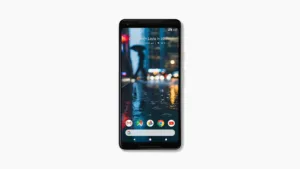Google’s newest smartphones, the Pixel 2 and Pixel 2 XL, are still hot off the assembly line, but early adopters of the Pixel 2 XL are already reporting issues of burn-in and image retention with the device’s OLED display.
Users are still able to see UI elements faintly when switching screens. Some reports are stating that the retained images seem to be fading after a short time, while others are finding images are becoming burned in and persisting through longer periods of use.
The standard Pixel 2 is not believed to be affected by the issue. The Pixel 2 was manufactured by HTC and features a Full HD AMOLED display, whereas the Pixel 2 XL was created by LG and uses the firm’s QHD+ P-OLED screen.
A Google representative responded to the reports with this statement:
We put all of our products through extensive quality testing before launch and in the manufacturing of every unit. We are actively investigating this report.
Analyst Comment
I recently saw some interesting information about steps taken to mitigate the issues of image burn in. Apparently, notifications and other elements in Android move around the screen at different times to reduce the repetition in a single spot. On the other hand, the Apple X is said to move the image on the display by a single pixel over time. In this way, the user will not notice the motion, but it does help to ‘smooth out’ burn in. The effect can be seen by changing the time on the phone by, for example, 24 hours to make the motion much more obvious. (BR)
Just as we went to press, Google said that “Thorough testing of the Pixel 2 XL display shows that its decay characteristics are similar to OLED panels used in comparable products. Our current investigation of burn-in, which started as soon as we received the first user report on October 22, confirms that the differential aging is in line with that of other premium smartphones and should not affect the normal, day-to-day user experience of the Pixel 2 XL. Regardless, we use software to safeguard the user experience and maximize the life of the OLED display, and we’ll make ongoing software updates to optimize further.”
The company also said that it would add some options to allow more saturated colours, which some users prefer. (BR)

